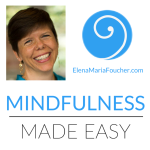 Often, I walk up a very steep hill. This is Hong Kong, which is much like San Francisco, we don’t kid around with steep. This is 123 meters of elevation gain in less than a kilometer… That’s steep. It’s so steep that it is cemented with horizontal lines for increased traction, the whole way up. Yep, steep.
Often, I walk up a very steep hill. This is Hong Kong, which is much like San Francisco, we don’t kid around with steep. This is 123 meters of elevation gain in less than a kilometer… That’s steep. It’s so steep that it is cemented with horizontal lines for increased traction, the whole way up. Yep, steep.
I’m walking up one rainy, slippery day and I get that familiar gut wrenching fear that I might slip and fall and suddenly it occurs to me, do I have to continue like this? What can I do to interact with this fear in a friendly way, to change my stomach churning fear of falling into something less… scary. Less reactive and more active.
And so I began to let my mind sift through ways to walk into this fear, completely accept it and play in it, thereby allowing it to shift as it wants.
One way would be to practice falling down. Yikes! I immediately decided that flinging myself down on the rough cement probably wouldn’t feel much like play, more like scabby torture… So I’ve decided to teach myself some ways to fall down at home. On my bed. From experts. From disciplines like gymnastics, Alexander technique, modern dance, martial arts… surely one of them would be fun and easy. So, off I went to do some research.
Of course synchronicity meant that when I got home with this brilliant idea, I didn’t even get it out of my mouth before my partner related a story about his day teaching two of his students how to do forward rolls… I love synchronicity.
So, here we go with how to start a practice of learning to fall with grace… With any luck I will soon be past the stiff or spat reaction.
Preparing your play space
Find a space that allows you to dive inside and not get interrupted, a safe place for you to play.
Preparing your landing pad
Play on something soft. I tried my yoga mat on the hard wood floor first. Major ouch! Maybe two or three mats would work, but I decided that the futon would be great. Your bed could be a good surface, or some soft, leafy or grassy ground.
Preparing you
Realize that this can get intense. Think about trusted friends or helpers who you can call on if you get in deep and want some help. Also, follow your innate wisdom, dive when it is good to dive and stop when it isn’t. Take care of yourself by staying attentive to your needs and when you notice that you can’t be attentive, take a break!
Warm up your body and especially if you have any physical challenges, consider how to do these practices in the safest way possible for your body. Only attempt things that seem reasonable for you and adjust as you go… remember that you are incredibly wise and capable and fully responsible for your self, so respect your infinite wisdom… Be safe and compassionate!
Finally, check in and locate in your body your fear of falling, in your belly or chest or where ever you hold it. You can even rate it for yourself from 1 – 10 (minimal to maximum fear) or write down what you notice about it to see how it changes as you play. Some things that you might notice are size, shape, weight, texture, color, sound, frequency, emotions associated with it, etc, etc, etc. If stories come up, note down one or two identifying details and let the story pass so that you don’t get caught up in mental drama. You can also keep paper handy for anything that comes up that you want to let go of with some cathartic writing (and possibly burning or throwing away).
Ready?! Let’s…
Splay!:
The first method: Jiu Jutsu forward roll!
Beginning with an inspiring tigers growl, this video features an excellent teacher giving clear and simple steps for learning a jiu jitsu forward roll (or how not to fall splat on your face)…
Watch the video! and then here are the basic steps for referral once you’ve watched and understood his method.
1. Start on your knees (praying that everything is ok, you’re just turning your world upside down, no biggie… OMG. This would be a good time to check in with your fear of falling and invite it out to play.:)
2. Place one hand out and tuck the other hand under your body in the direction of the opposite knee. Breathe. Connect with your fear of falling.
3. Tuck your chin towards your chest, start moving your ear towards the floor and sending that opposite leg up into the air (now’s your chance to pee on any fire hydrants that are handy… letting lose your fears of falling, cause here it comes!)
4. Breathe as you roll forward onto your tucked shoulder (keeping your head and neck off of the floor), across your back and onto and over your opposite hip.
5. Smile because your fear is just a fear and you are alive to play with it.
Note that if, like me, you end up doing half a roll and lying sideways on your back, it helped me to focus on sending my ear down towards the floor and also lifting up the opposite leg. This combination helped me direct my weight diagonally across my body instead of straight down my back, losing momentum and unrolling half way through. Yep, more of a splat than a roll.
When you are ready, start from standing, the biggest difference being that you will bend your knees as you go down, rolling onto on your tucked shoulder with no added arm support.Try it! It is simple once you get the kneeling roll down. Took 5 whole minutes! Wheeee!
I got so caught up in learning the roll that I didn’t play in the fear much yet.
Off to see how that goes!
I’d love to know how your own play date with falling with grace goes…
Enjoy!,
Elena

 (meditation: 10:47 min) This meditation is a combination of two practices. It starts with Field of Vision and then shifts to Sensational Awareness.
(meditation: 10:47 min) This meditation is a combination of two practices. It starts with Field of Vision and then shifts to Sensational Awareness.
